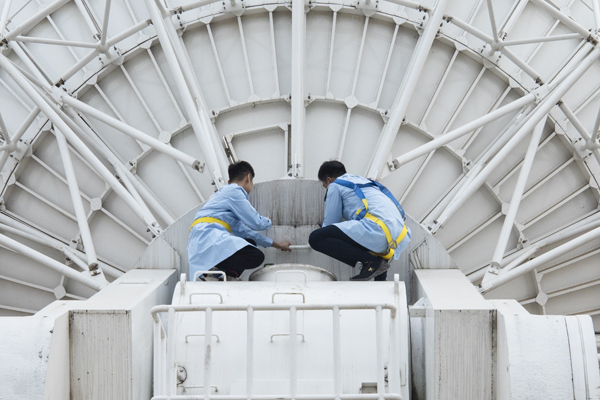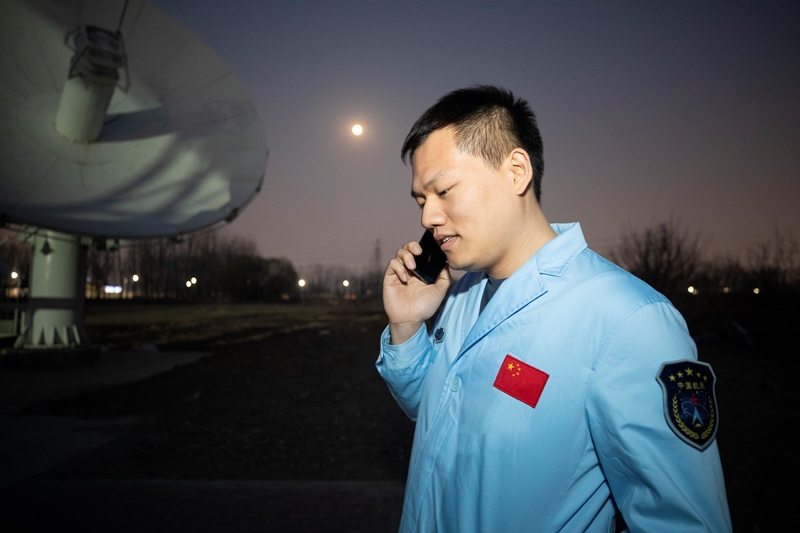In March 2021, “Sky Chain One” 02 star ground system completed the shutdown maintenance, with a new state into the task of the joint exercise. This marks the successful completion of the upgrading of China’s next-generation relay satellite ground system (hereinafter referred to as the “generation system”) over the past 4 years, and the Beijing Space Information Transmission Center has achieved the stated goal of “integrated transportation management of one- and two-generation relay satellite systems” on schedule, greatly improving the reliability, ease of maintenance and automation of relay satellite systems.
According to reports, at the end of 2017, in response to the aging of a generation of system equipment and software non-localization and other issues, the center in a wide range of in-depth research on the basis of carefully put forward the “co-ordination of existing relay satellite system maintenance, transformation projects, to promote the realization of relay satellite transport control system first and second generation integrated transport management, and comprehensively enhance the efficiency of relay satellite system” the overall goal, officially sounded the horn of a generation of system upgrade and transformation.
The upgrade includes more than 10 major and medium-sized repair projects and 4 special renovation projects, aimed at improving the automation and operation capacity of the first generation of systems and optimizing the dynamic configuration mode of ground equipment.
It is worth mentioning that they also creatively put forward the idea of “making one generation system meet the operating mode and interface design of the second generation relay satellite ground operation control system (hereinafter referred to as the “second generation system”), and therefore, the upgrade is called “two tubes and one”.
“In layman’s terms, “two tubes and one” is on the basis of this generation of system maintenance and transformation, in accordance with the interface of the new second-generation system and localization requirements, to achieve the old, faulty, non-domestic equipment and software upgrade and replacement, which sounds very simple, feels like a switch between the two systems, but it is no less difficult than rebuilding a system. Lu Lihong, an engineer in the center’s general room, said.
In 4 years, the center science and technology personnel in addition to to deal with the risk challenges brought about by the transformation of localization, but also to overcome the transformation period to ensure that the measurement and control tasks are foolproof of the enormous pressure, the outbreak of new coronary pneumonia in 2020, but also to the transformation work has brought continued uncertainty …
Although there are many difficulties, but they have never taken a step back, and always maintain the strength to meet the difficulties, tenacious struggle, tightly around the “quality improvement, ensure success” goal, risk-sharing, problem joint research, have the spare time to jointly grasp, has carried out feasibility demonstration, program design, research and transformation, site installation, system joint testing and other stages of work, and finally achieved a “two-tube one” success, the realization of relay satellite system software 100% domestic.

“This upgrade not only greatly reduces the complexity of system operation and maintenance management, achieves the goal of reducing equipment failure rate, improving system stability and autonomous controllability, but also provides a practical and reliable system improvement method, providing valuable experience for the follow-up work.” Renovation mission leader Gao Fei told the author, “As an important means of china’s implementation of space-based measurement and control, relay satellite system will be this upgrade as an opportunity to further support China’s space measurement and control efficiency to achieve a breakthrough leap, in the upcoming space station mission to better play their role in the Communist Party of China’s centennial tribute!” ”



